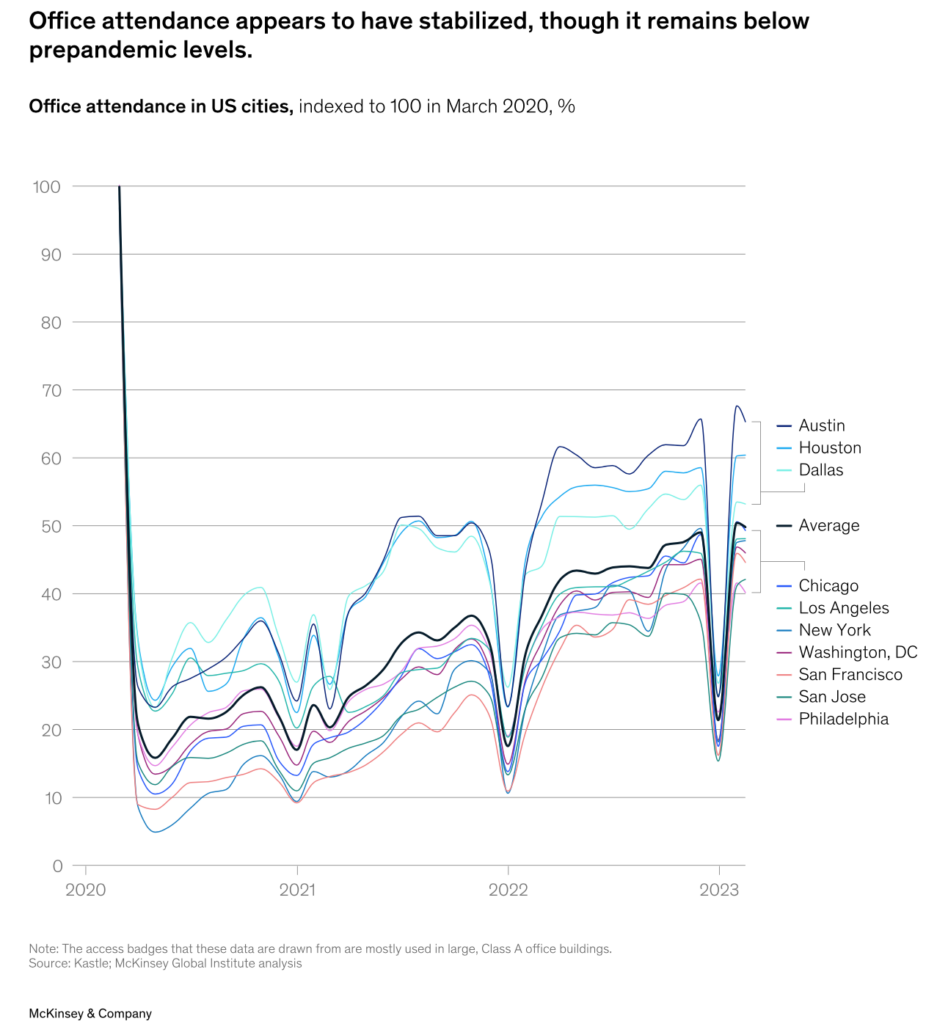Over the last ten months, there has been a spike in the number of strategy reports minted predicting the impact of technology on – well, pick the subject, business operations, employment, and the survival of humanity as we know it.
These works are great food for thought, but how often do we go back to “judge” their correctness? Or, for that matter, our prognostications.
In early 2021, as part of the requirements to become a digital transformation black belt, I penned a research paper that laid out a digital transformation roadmap for NYC Transit. The primary goal was to demonstrate how public transit could capitalize on key digital trends to help enhance its viability, particularly the subway system, during and post-pandemic.
Given the above, it was time for me to break the virtual seal and review what I wrote, given what we know today.
A Shift in Work Habits
Not surprisingly, many things pan out differently than assumed. The pressure to radically accelerate technology adoption to survive did not materialize across the board. Some solace, however, is the increase in seriousness organizations have for entertaining more forward-looking possibilities. There also is no serious public conversation about consolidating the myriad of Metro-New York systems to improve customer experience.
Don’t stop by if it is Monday or Friday
According to a McKinsey & Company report, in major cities visits to office buildings are just over 40% lower than in early 2019. Even in New York City, where the return to the office rate is greater than most of its peers, the rate is 30% less than the 2019 figures and when workers do show up, it is typically between Tuesday and Thursday.

Digitization of Supply Chains
According to Nada R. Sander, one of the largest issues during the pandemic was the lack of visibility into the supply chain. Companies were blind to where their goods were or when they might arrive. In Sanders’ Bloomberg article, companies have turned to cloud computing to reduce their risk by improving their communications, adopting AI to make better decisions, and incorporating robotic process automation (RPA) to handle the incremental work of bringing tracking in-house.
Whether it is about transportation, education, or banking, the need for every organization to consider how to navigate the technology world best has never been greater. The case for becoming a digitally capable enterprise is no longer mounting; successful use cases like these are staring us right in the eye.
The Role of Generative AI
The difference between what I envisioned and today’s reality is that in the two and a half years since my paper, staggering progress was made in machine learning (ML), artificial intelligence (AI) in particular, and the supporting elements. The most significant leap was in Generative AI in 2022 when developers were granted access to foundation models (transformers) that had been prohibitively expensive up to that point.
These models are built on a complex neural network architecture that uses patterns and relationships to predict the next item in a sequence. These clever algorithms can analyze vast amounts of domain-specific unstructured data, are homogenized, and, most importantly, highly flexible. This allows them to be developed for specialized industries or tasks. In addition to the use case mentioned above, you can find Generative Models being put to use in quality control, process optimization, customer personalization, summarizing large complex documents, and forecasting roles.
In Conclusion
“We went from being the Flintstones to the Jetsons in 9 months.”
Daniel H. Schulman, President & CEO of Paypal
In complex, fluid environments, hindsight provides valuable insights into the journey we have embarked upon. As we reflect on the predictions made and the realities we face today, it’s evident that the path of progress is filled with unexpected twists and turns.
The COVID-19 pandemic reshaped our work habits and accelerated the adoption of digital technologies, pivotal in enhancing productivity and efficiency. Generative AI emerged as a game-changer, revolutionizing how organizations process data, automate tasks, and personalize customer experiences. Its flexibility and adaptability have unlocked a world of possibilities, from quality control to forecasting.
While the future remains uncertain, the digital transformation journey will continue to fuel innovation, connect us with new possibilities, and empower the creation of exceptional customer experiences in ways we can’t yet fully predict.
I, for one, look forward to the adventure ahead. Do I know exactly what will happen in two, no less than five years? Certainly not.
But isn’t the journey the fun? Accepting the challenge of transforming an operation, connecting with others, and continuously creating great customer experiences.
What do you think?
P.S. Does anyone know where I can pick up a slightly used quantum computer? It might be helpful sooner than we think.
